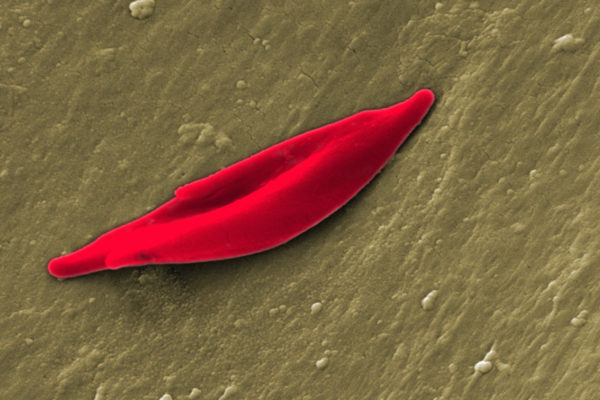
Until recently, patients with sickle cell disease (SCD) had only a limited number of treatments at their disposal. After the initial results of the HOPE trial1, voxelotor, an oral once-daily sickle haemoglobin polymerisation inhibitor was approved for patients aged 12 years and older with SCD. The international, randomised, double-blind, placebo-controlled phase III HOPE trial was performed at 60 clinical centres across 12 countries. Patients (aged 12–65 years) with confirmed sickle cell disease, a haemoglobin concentration of 5.5–10.5 g/dL at enrolment, and who had between one and ten vaso-occlusive crisis events in the previous year were enrolled. In total, 274 patients were randomly assigned to voxelotor 1,500 mg (N= 90), voxelotor 900 mg (N= 92), or placebo (N= 92) for 72 weeks.2
After 72 weeks of treatment, the adjusted mean change in haemoglobin concentration from baseline was 1.0 g/dL (95%CI: 0.7 to −1.3) in the voxelotor 1,500 mg group, 0.5 g/dL (0.3 to −0.8) in the voxelotor 900 mg group, and 0.0 g/dL (−0.3 to 0.3) in the placebo group, with a significant difference observed between the voxelotor 1,500 mg group and the placebo group (p< 0.0001), and between the voxelotor 900 mg group and the placebo group (p= 0.014). Voxelotor also induced significant improvements in markers of haemolysis. As such, the adjusted mean percentage change from baseline at week 72 from 1,500 mg voxelotor versus placebo was -26.6% for indirect bilirubin concentrations and -18.6% for percentage of reticulocytes. The proportion of patients in the voxelotor 1,500 mg group who were rated as “moderately improved” or “very much improved” at week 72 with the CGI-C was significantly greater than in the placebo group (74% vs. 47%, p= 0.0057). Serious adverse events unrelated to SCD were reported in 28% of patients in the voxelotor 1,500 mg arm, 22% in the voxelotor 900 mg arm and 25% in the placebo arm. Grade 3 and 4 adverse events occurred in less than 10% of patients. Anaemia occurred in 2% of patients in the voxelotor 1,500 mg group, 8% of patients in the voxelotor 900 mg group and 3% of patients in the placebo group. In each treatment arm, two deaths were reported, all of which were judged as unrelated to treatment.2
CONCLUSION
Voxelotor 1,500 mg resulted in rapid and durable improvements in haemoglobin concentrations maintained over 72 weeks and has potential to address the substantial morbidity associated with haemolytic anaemia in sickle cell disease.
References